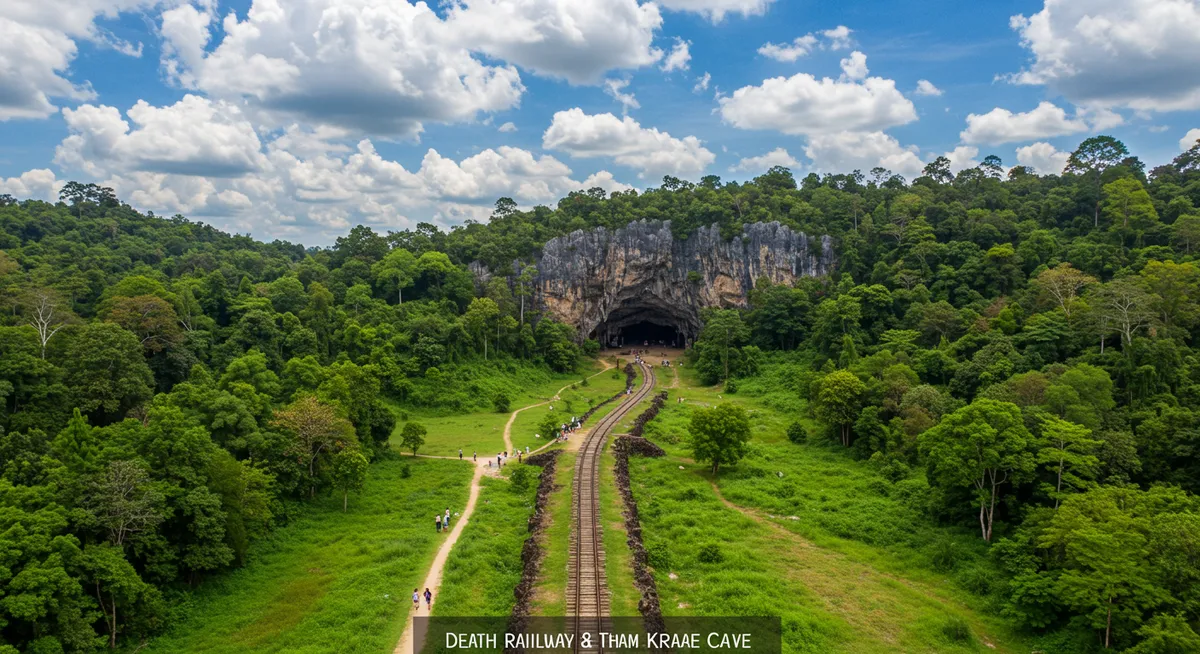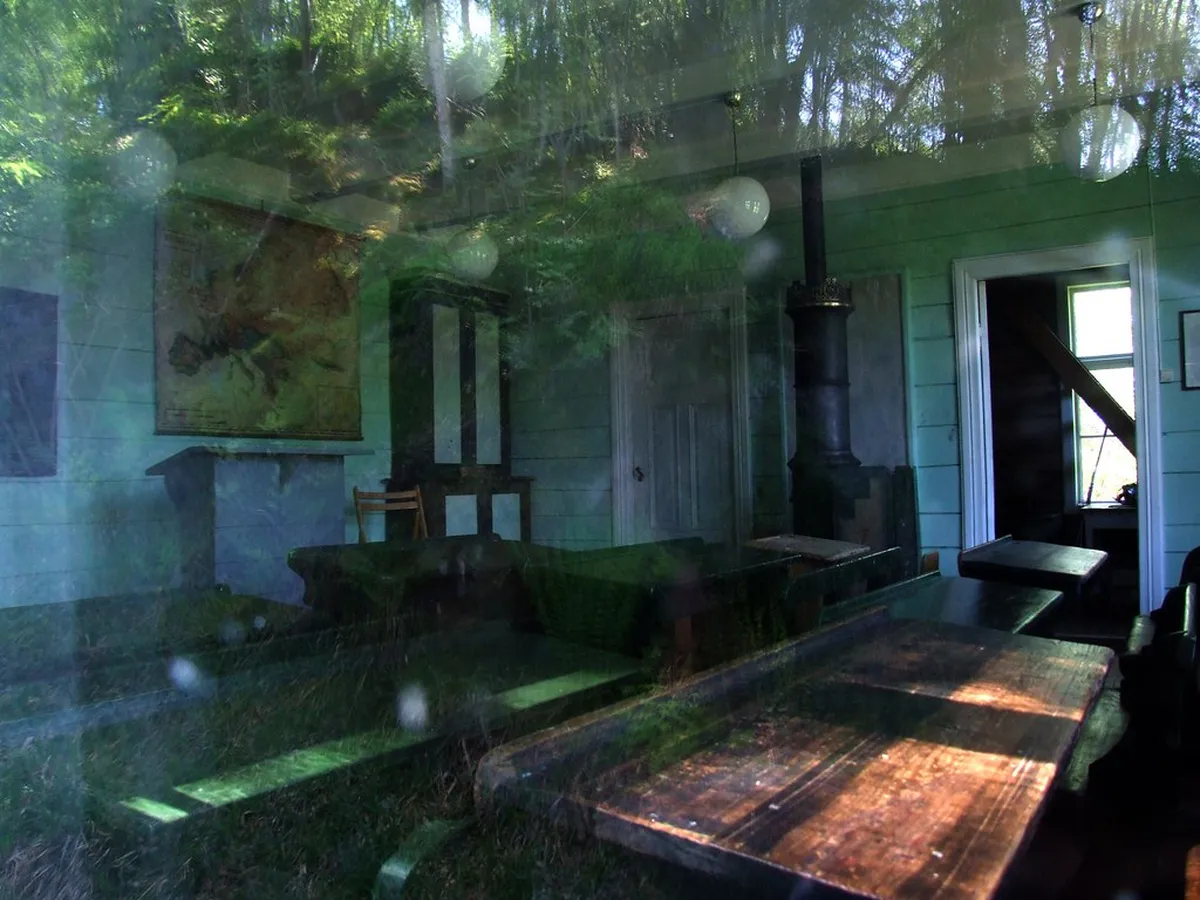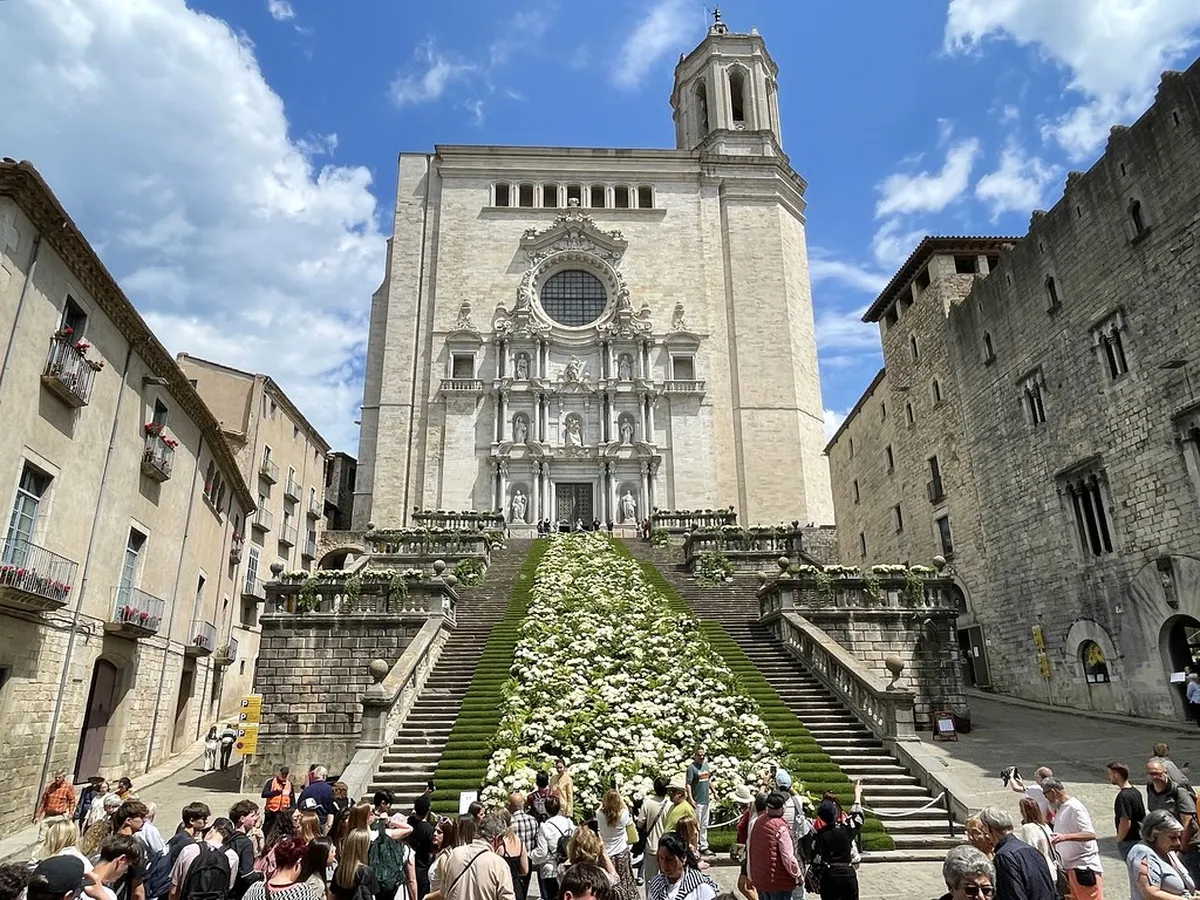Exploring the Historic Death Railway and Tham Krasae Cave
Having explored Kanchanaburi extensively, I’ve found few places as historically resonant and visually striking as the Death Railway and Tham Krasae Cave. Walking along the wooden Wampo Viaduct, you can truly feel the weight of history underfoot, a poignant reminder of its past. This guide will help you navigate a visit to this iconic site, ensuring you experience its solemn beauty and significant history firsthand. Discover the best local cuisine with our Kanchanaburi food guide. Coordinate your travel plans with our Kanchanaburi itinerary.
The Historical Significance of the Death Railway
Plan this trip faster with our free online itinerary maker. Get a personalized day-by-day plan in minutes.
The Death Railway, officially known as the Thailand-Burma Railway, stands as a profound testament to the human cost of World War II. Built by Allied prisoners of war and Asian laborers under horrific conditions, this 415-kilometer line was intended to supply Japanese forces. Visiting provides a solemn insight into their immense suffering and sacrifice. A powerful segment of this railway, the Wampo Viaduct, winds dramatically along a cliffside. For a deeper understanding of the entire railway's history, including the famous bridge, explore our dedicated Bridge over the River Kwai history and visitor guide. This area truly underscores the resilience of the human spirit amidst profound hardship. Find the perfect place to stay with our Kanchanaburi accommodation guide.
Experiencing Tham Krasae Cave and the Wampo Viaduct
Adjacent to the historic railway line lies Tham Krasae Cave, a small, unassuming cave that served as a POW camp during the railway's construction. Today, it houses a revered Buddha image, offering a moment of quiet reflection amidst the poignant history. The highlight for many visitors, myself included, is the scenic walk along the Wampo Viaduct. This wooden trestle bridge section offers stunning views of the Kwai Noi River valley and the surrounding jungle. You can typically walk along the tracks when no train is approaching, capturing breathtaking photos. It’s an integral part of the things to do in Kanchanaburi experience, truly bringing the past to life. Connect with nature using our Kanchanaburi nature guide.
Getting There and Best Time to Visit
Reaching the Death Railway and Tham Krasae Cave is relatively straightforward from Kanchanaburi town. You can hire a songthaew (shared taxi), a private taxi, or join an organized tour. For those traveling from Bangkok, the most authentic experience is often by train directly to the Tham Krasae station, which is right by the cave and viaduct. This train journey itself follows a significant portion of the original Death Railway. Consider reading our guide on how to get to Kanchanaburi from Bangkok for detailed transportation options. The dry season (November to February) is ideal, offering cooler temperatures and clearer skies for your exploration.
Tips for Your Visit to This Historic Site
💡 Pro Tip: Book your Kanchanaburi adventures in advance through Viator for the best deals!
When planning your visit to the Death Railway and Tham Krasae Cave, wear comfortable walking shoes, as you’ll be on uneven terrain and railway tracks. Don’t forget water, especially during warmer months, and a hat for sun protection. While at the site, be respectful of its solemn history and the local community. My top tip: try to time your visit with a train arrival or departure; watching the train slowly cross the Wampo Viaduct is quite a spectacle. Incorporating this site into a broader Kanchanaburi itinerary allows you to combine it with other significant attractions like the Bridge over the River Kwai and various war museums, enriching your understanding of the region.
Frequently Asked Questions
How long does it take to visit Tham Krasae Cave and the Wampo Viaduct?
Can you ride the Death Railway?
Is Tham Krasae Cave difficult to access?
A visit to the Death Railway and Tham Krasae Cave is more than just sightseeing; it's a journey into a pivotal moment in history, offering profound insights into human endurance and sacrifice. From the solemn cave to the breathtaking viaduct, every step reinforces the importance of remembering the past. This poignant guide equips you to experience the emotional depth and scenic beauty of the Death Railway. Plan your trip to Kanchanaburi today and connect with this extraordinary historical site.



